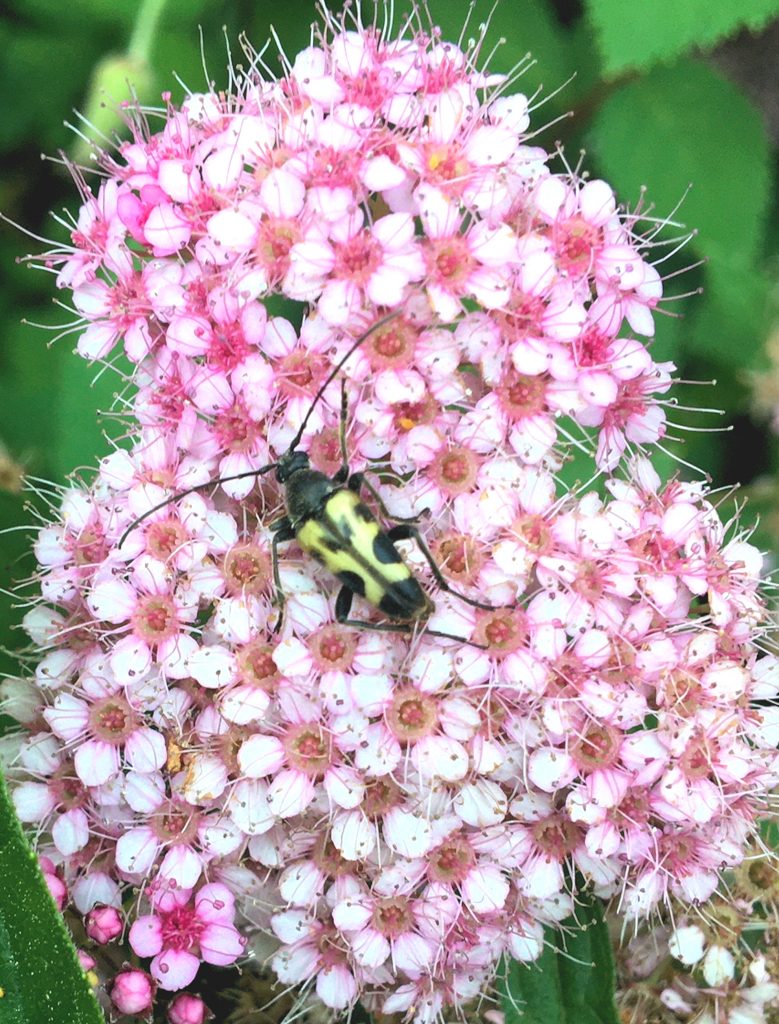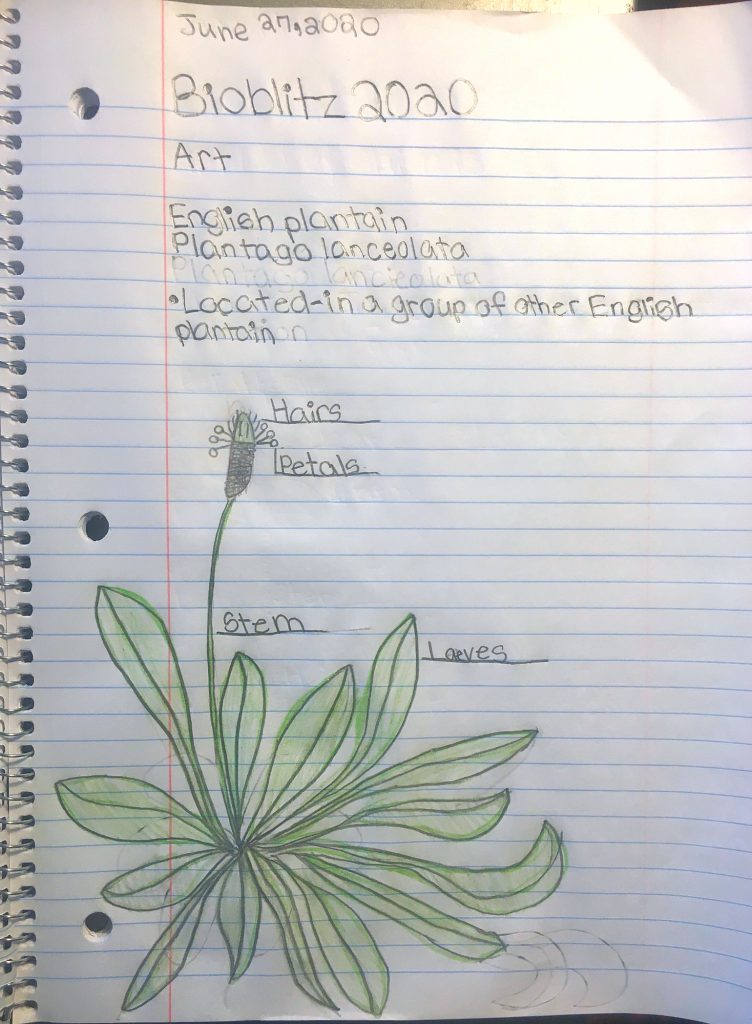
Date: June 27-28, 2020
Location: Backyards all around Rhode Island (and beyond!)
Due to the coronavirus emergency, the BioBlitz planned for June 2020 in Cumberland had to be postponed until 2021. In its place we organized a socially distanced, backyard BioBlitz where everyone inventoried species in their yards or another space within walking distance, and we shared our finds using the internet and social media.
The event was held June 27-28 from 1 p.m. to 1 p.m. Over 350 people participated, including more than 60 school-age children. Over 160 locations were surveyed and over 6,000 observations recorded, encompassing just over 1,400 different species of animals and plants. These included 28 mammals, 97 birds, 15 fish, 9 reptiles, 10 amphibians, and 13 butterflies.
As the BioBlitz got underway on Saturday afternoon, a steady rain dampened some spirits but not those at Josh and Tarah Clements’s house, “Not much luck in the rain but still having fun! Hope you guys are enjoying the day. Lots of memories with the nieces and extended family over for some outside fun.”

The Zabel family, from Greene, got out all their field guides in preparation and ended up submitting 145 species in 11 taxonomic categories including the flies, where their finds—“mosquito, deer fly, house fly”—show that even pests can
add to biodiversity. URI graduate student Karlo Berger bioblitzed his yard in Providence. He submitted 21 species and added, “A fun time! Thank you for organizing this.” And Rachel Holbert from her home in Barrington said “We really enjoyed the chance to nerd out in our backyard.”
Interestingly, dispersing observers around the state in this way did not result in a lot of rarities, no doubt because for the most part people stayed near their homes. Though the “herptile” (reptiles and amphibians combined) count approached the R.I. BioBlitz record, there were no observations of noteworthy uncommon species such as box turtle, black rat snake, marbled salamander, or four-toed salamander. The record-high mammal count for all Bioblitzes was composed not of rarely observed water shrews, weasels, or bobcats but of common species such as skunk, woodchuck, red fox, or raccoon plus a few common in the right habitat such as beaver. The results support the generally accepted inverse relationship between human occupancy and rare species.